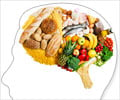
They discovered strong rhythmical activity reflecting a state of excitement in the animal. This activity was particularly strong and synchronous between areas of the brain associated with social memory during the first encounter between two previously unfamiliar rats.
This rhythmical brain activity declined in strength and in the level of coordination between different brain areas as the encounter between the two rats was repeated.
"The results said the excitement of the social encounter with a stranger rat created the high level of synchronized rhythmic activity in the brain, and it was this factor that seems to facilitate the formation of social memory," Wagner said. "In essence, this explains why people tend to remember in particular their first encounter with a future friend or partner," Wagner said.
The researchers then exposed the rats to a different emotion -- a negative one associated with exposure to a frightening stimulant.
Once again, strong rhythmical activity and coordination between the different areas associated with social memory was seen. However, this took place on a different frequency and at a slower rhythmical pattern.
Advertisement
Source-IANS















